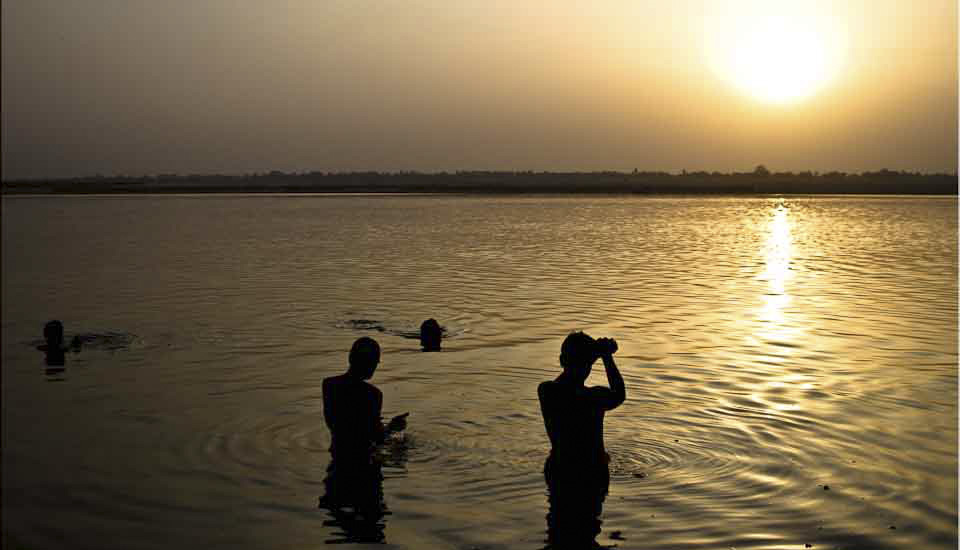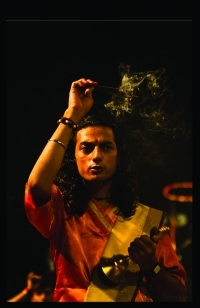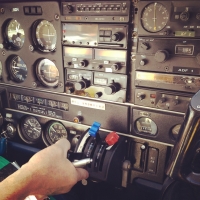.jpg)
Bhima pays his Respects
In a small theatre in Fort Kochi, Bhima – a hero and one of the most prominent characters in the Hindu epic Mahabharata – appears in the elaborate costume and makeup integral to a South Indian Kathakali dance performance.
India is home to a number of classical dance and drama forms: usually enacting stories from Hindu mythology, and each conforming to an ancient Sanskrit treatise on the performing arts. Each has its own distinctive regional roots.
In Kerala, Kathakali takes its place as a nationally recognised art form, known for its elaborate makeup, stylised movements, heavy costumes, and portrayal of mythological stories.
I had been travelling across South India with a small group on a tour that ended in Kerala. We had spent our last day together exploring Fort Kochi (see: A Morning in Historic Fort Kochi). I had some extra time in that delightful coastal city before taking myself up into the Hill Stations in Kerala’s interior.
On our first evening in Fort Kochi, we had attended a Kathakali performance (see: An Introduction to Kathakali). I was so entranced by it, I booked myself a second performance at the Great K V Kathakali Center. Hearing that the program was different each evening was a bonus.
To people familiar with the Mahabharatha, an epic Sanskrit poem about the battles of good and evil, the excerpt performed on stage might make sense. Even though I had a typed outline of the story, I had difficulty following some of the ‘action’.
Not that it matters! Kathakali is a visual treat – and an aural assault.
Kalyanasougandhikam is a story about Bhima (Bheema) who, at the request of his wife Panchali (sometimes called Draupadi) goes into the forest in search of the intoxicatingly fragrant Sougandhika flower – an auspicious water lily. While there, he inadvertently disturbs Hanuman, who happens to be his half brother, but is disguised as an old monkey so that Bhima doesn’t recognise him.
There is a battle, which Bhima fails to win. Surprised, he demands to know how this monkey could have withstood him. Hanuman reveals himself, they make peace with each other, and life goes on …
Join me in the heat and dark for the complex preparation, a short explanation, and a very noisy short story.
.jpg)
Face Painting on Stage
One of the joys of attending the Kerala Kathakali Centre is watching the men’s lengthy and careful preparation on stage.
.jpg)
Preparation
The men’s transformations into the well-known characters takes patience and precision.

Applying the Beard
The makeup and costumes all follow a prescribed code which helps the audience easily identify the archetypal characters: the gods, goddesses, demons, saints, animals, and other characters that make up each story.

Building the Beard
The white beard (Vella Thadi) is reserved for characters who embody goodness, divinity, and refinement.

Accoutrements

Painting Orange
Watching the layers build up, I have no idea how these faces are going to turn out!

Three-Dimensional White
This white is probably rice powder paste, and certainly makes the other colours pop.

Green : Pachcha
The performers alternate between being helped and painting themselves.

Details

Shiva Burns
The whole performance space has a ritualistic feel. A candle in a dancing Shiva frame is garlanded in marigolds – which are thought to bring divine blessings, prosperity, and protection.

How the Colours are Made
Our narrator/host explains how the traditional makeup is made, using powdered stones to make the yellow, green, and red; lime and rice flour for the white; and gingelly oil to make the black.

On a Maddalam Drum
A Kathakali performances is accompanied by music, which includes drums, …

Musician
… cymbals, a squeeze box, and voice. To my untrained ear, it is discordant and loud.

Demonstrating Eye Movements
Traditionally, men have performed all the roles in Kathakali stories. The performer playing Bhima’s wife Panchali demonstrates the extraordinary eye rolls that convey particular meanings.

Demonstrating Facial Expressions
Facial movements, body postures, and hand mudras also convey meaning. Panchali’s yellow face paint signifies she is a noble, virtuous, and feminine character.

And the Story Begins …
Panchali finds a Sougandhika flower on the breeze, and persuades her husband Bhima to go into the forest to find more.

Bhima and Panchali
It is a lengthy, but affectionate, discussion. Notice the metal tips on the fingers of his left hand, intended to make hand gestures more visible.

Bhima
In terms of costume and makeup, I cannot distinguish Bhima from Arjunan the archer, whom I saw in the last performance (see: An Introduction to Kathakali).

A Loving Couple
Bhima and Panchali are delightfully affectionate with each other.

Hanuman in the Forest
Meanwhile, Hanuman is in the forest, preparing to meditate.

Hanuman is Angry
Angry at being disturbed, Hanuman disguises himself as an old monkey, and takes Bhima on.

Bhima in Collapse
Upon learning Hanuman’s identity, Bhima collapses.

Hanuman and Bhima
The half-brothers come to agreement …

The Old Monkey
… and Hanuman sends Bhima on his way.
And so, the show winds up – the short duration belying the hours of nightly preparation, and the years of practice that go into learning the artform in the first place.
 The relative cool and quiet of the the Fort Kochi street outside is a welcome relief from the heat and noise in the small theatre.
The relative cool and quiet of the the Fort Kochi street outside is a welcome relief from the heat and noise in the small theatre.
For, as much as I love it, I’m glad when it’s over!
Photos: 01February2023





























.jpg)

